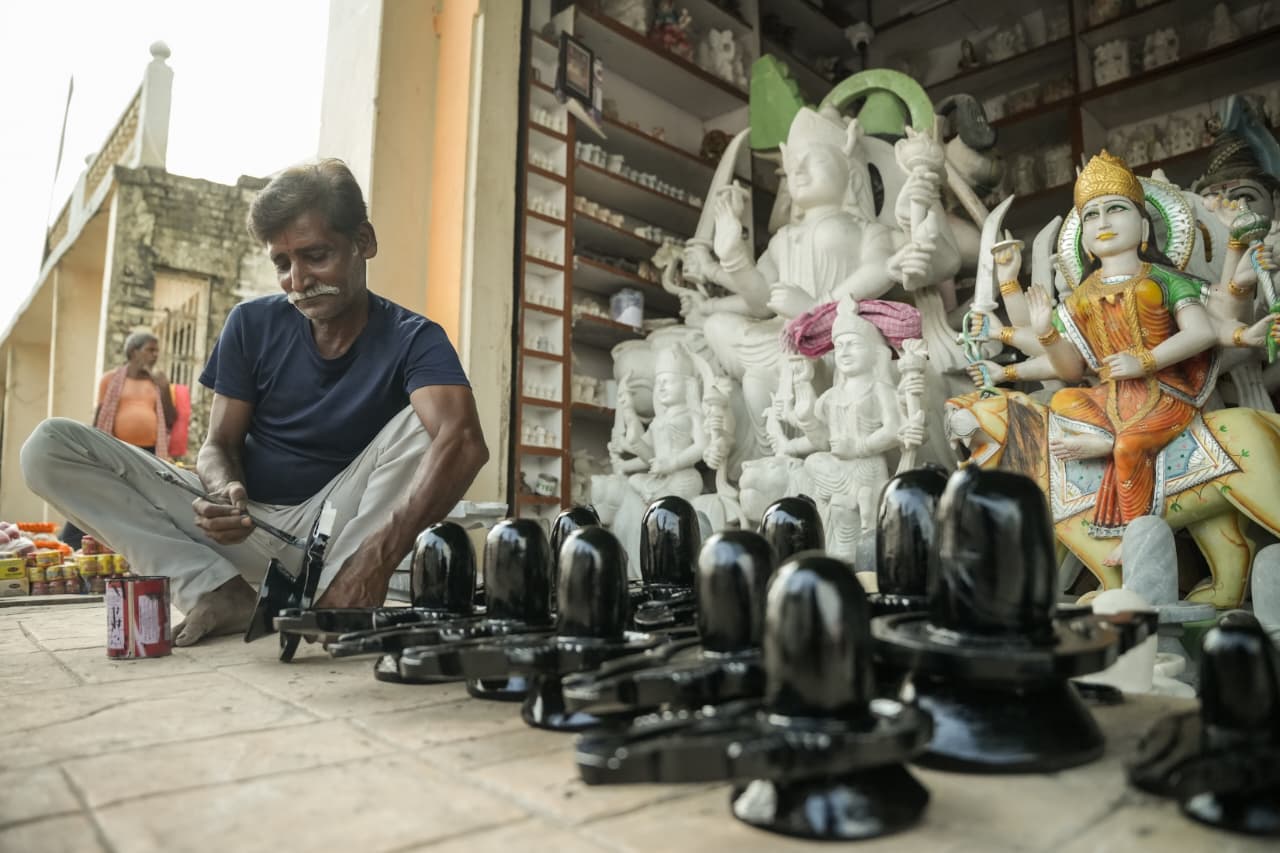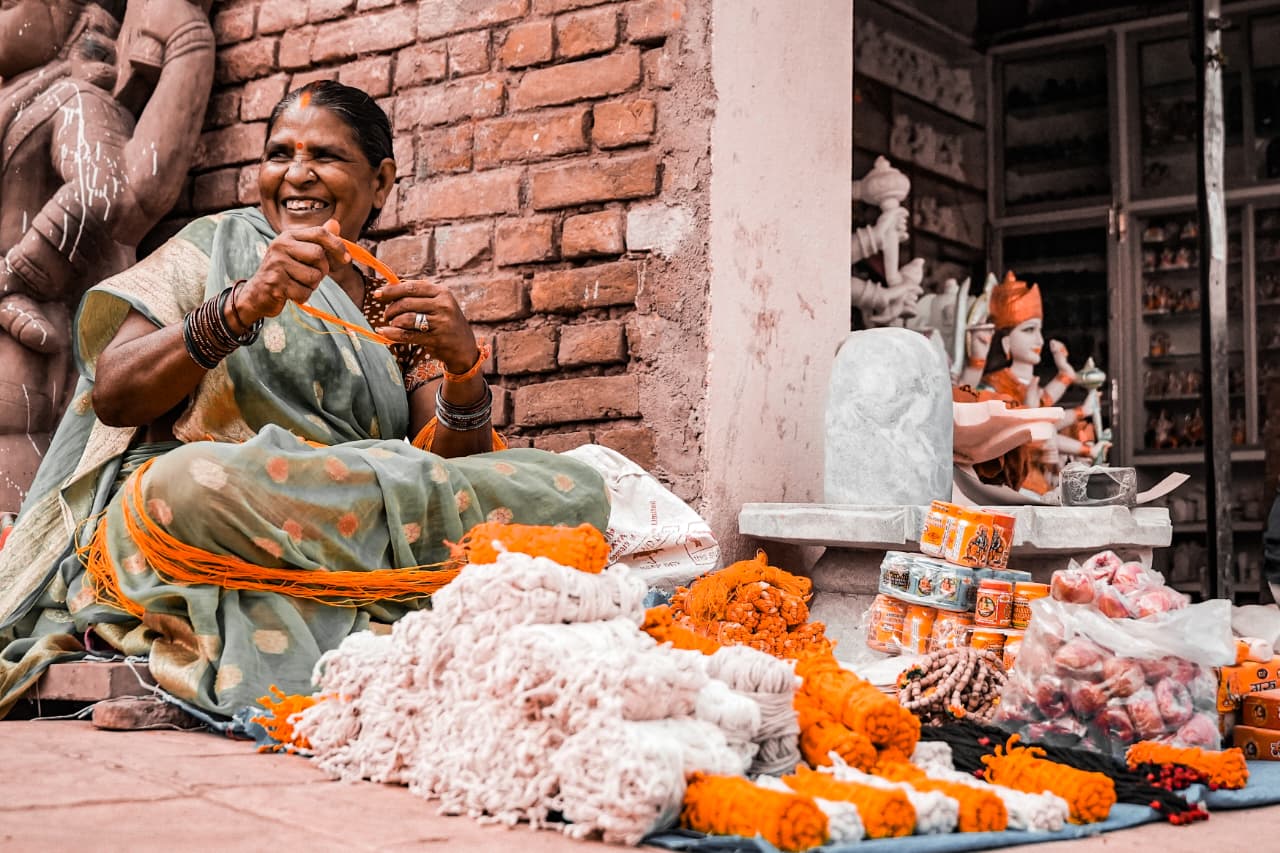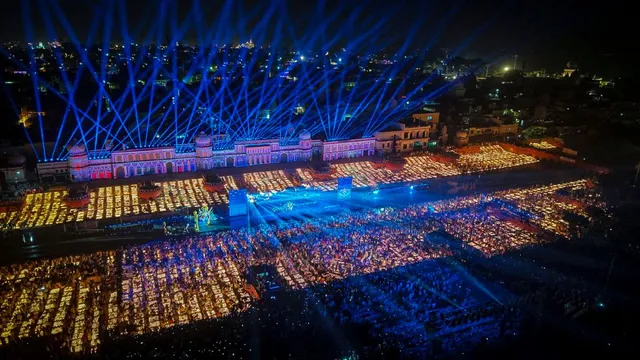- By News Desk
- Fri, 31 Oct 2025 04:30 PM (IST)
- Source:JND
As millions of diyas shimmered on the ghats of Ayodhya, the holy city once again turned into a sea of light and devotion. Deepotsav 2025 was not just a celebration of faith but a festival that brightened lives and lifted the city's spirit. From 51,000 diyas in 2017 to more than 26 lakh this year, Ayodhya's festival of lights has grown by over 15 times in just nine years, showing how beautifully this event has expanded in scale, technology, and emotion. The entire city glowed with happiness, pride, and prosperity as the reflection of diyas danced on the calm waters of the Saryu River.
The crowd this year was larger than ever. Around eight lakh devotees arrived in Ayodhya between October 16 and 22, including nearly five lakh who visited the Ram Lalla Temple alone. People came not just from different states of India but also from countries like Thailand and America. Almost every hotel, guesthouse, and restaurant in the city reported around 90 per cent occupancy. Streets were full, ghats were alive, and temples echoed with chants, creating a feeling that the whole city had turned into one big family celebration.
"I came here from Jalgaon with my family, and it was beyond imagination," said Vinay Patki, a devotee from Maharashtra, adding, "The whole city was glowing with devotion and happiness. It felt like we were living inside the story of Ramayana itself."
The sight of more than 26 lakhs of diyas lit up the ghats, a 1,100 Made-in-India drone show filled the sky with colours, which brought smiles to the faces of everyone. And, the record making aarti, where 2,100 devotees performed together, filled the ghats with divine energy.
But the beauty of Deepotsav was not limited to the lights; it also shone through in the lives of thousands of locals who depend on this festival for their income. The festival gave a strong boost to Ayodhya's local economy, adding around five crore rupees in just five days. Shopkeepers, artisans, and small vendors said they earned more this month than in the last three months combined.

The glow of the festival spread to every corner of the city, from hotel owners to street vendors. Vijay Verma, who runs a hotel in Ayodhya, added, "Our bookings were full. We witnessed an 80 to 90 per cent increase in business compared to normal days." Dharampal Singh, who owns a sweet shop near the Lata Mangeshkar Chowk, said, "This year we saw a 35 to 40 per cent rise in business. People from all over came to buy sweets and prasad for Lord Ram."
Restaurant owners also shared similar joy. Vikram Gupta, who runs a small eatery, said, "We saw nearly 30 to 40 per cent growth in sales during Deepotsav. People wanted to enjoy local Awadhi food after visiting the ghats." Shivam, a clothing shop owner, said, "We had around 20 to 30 per cent rise in clothing sales. Tourists bought traditional kurtas and souvenirs."
Even those running small shops felt the change. Aman Pandey, who runs a banner and graphics shop, mentioned, "This festival gave us a good profit margin. We had more orders than any other time of the year." Ramesh Yadav, who runs a small tea stall near Ram Ki Paidi, said happily, "During Deepotsav, we saw around two to three times growth in our business. From morning till night, devotees kept coming for tea, and we barely got time to rest."
Local diya sellers also enjoyed a busy season. Sunita Devi, who sells earthen lamps on the roadside, said, "We earned very well this year. During Deepotsav, our sales went up by almost 70 to 80 percent compared to normal days. People bought diyas in bulk to light up the ghats and their homes."
The rise in income wasn't limited to shopkeepers. Even small service providers earned more than they usually do. Rambahadur, a rickshaw puller near Hanuman Garhi, said, "On normal days I earn around 300 to 500 rupees, but during Deepotsav, I earned more than 2000 to 3000 per day. It was hard work, but it felt good because people were happy and generous."
The festival also brought smiles to the faces of tilak artists, who apply the names of deities on devotees' foreheads. One of them, Mohit Kumar, said, "With just a little investment, we earned good profit. I made around 800 to 1000 rupees a day during Deepotsav, compared to only 200 or 300 on normal days."
Supporting this success is Ayodhya's growing infrastructure, which made travel and tourism smoother than ever. With four-lane and six-lane highways, a modern railway station, and a world-class airport, the city is now ready to welcome visitors from every corner of the world. The government's focus on improving roads, cleanliness, and tourist facilities ensured that devotees could enjoy the festival comfortably and safely.
Speaking about the success of Deepotsav 2025, Uttar Pradesh's Minister of Culture and Tourism, Jaiveer Singh, said, "Deepotsav is not only a festival of faith but also a reflection of Ayodhya's growing strength as a world tourism hub. This event has created new opportunities for local traders and helped the city's economy shine brighter than ever."
Inspired by the vision of Chief Minister Yogi Adityanath, Deepotsav has grown from a small celebration of lamps into a festival that lights up lives, livelihoods, and dreams. Each passing year, as the number of diyas multiplies on the ghats of Ayodhya, so do the hopes and happiness of its people.

The glow of millions of lamps today mirrors the growing strength of Ayodhya's economy, the rising livelihood of traders and artisans, and the faith of devotees who travel from every corner of India and across the world to be part of this grand event.
Foreign guests from countries like Poland, Ukraine, and Thailand were amazed by the beauty of millions of diyas and the warmth of the people. Deepotsav 2025 showed that light can do more than shine; it can build lives and dreams. Each diya glowing on the ghats today reflects the spirit of a new, developing Uttar Pradesh, where faith and progress walk together.

